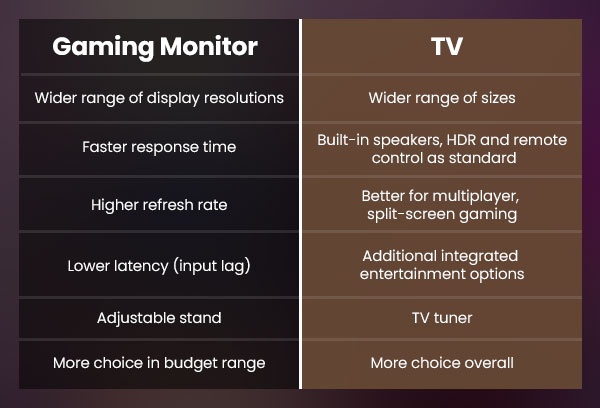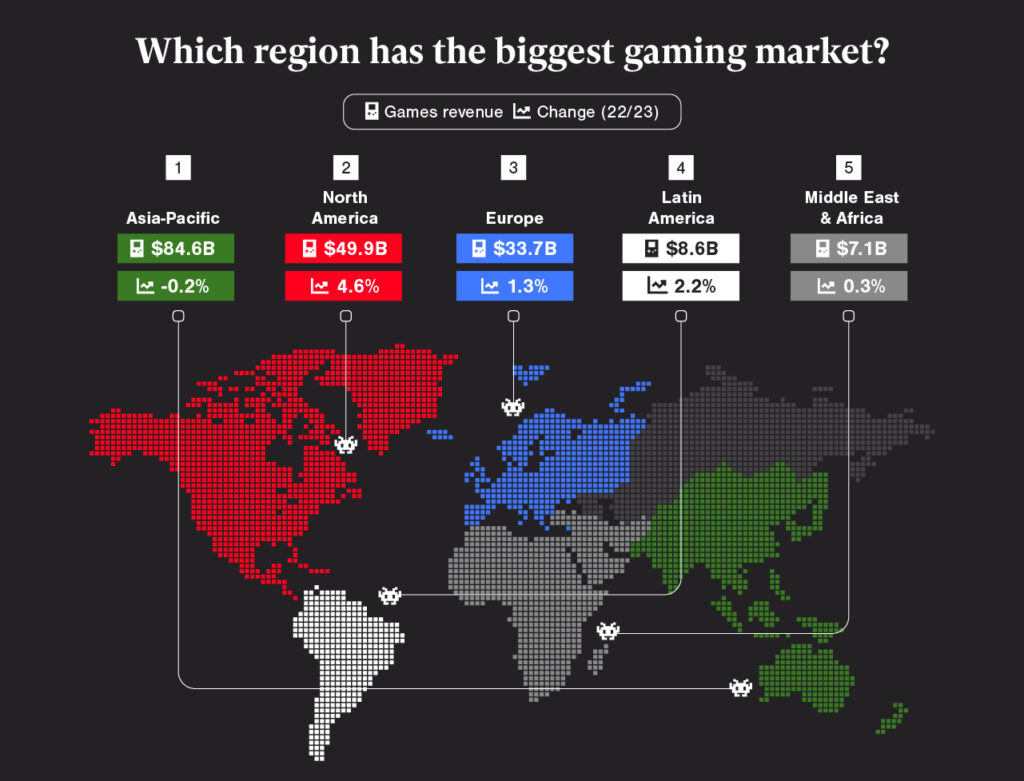
Once, video games were a niche hobby. By 2021, the gaming market had exploded into a multi-billion-dollar industry with people dropping money on consoles, hardware, online subscriptions, virtual reality, cartridges, and microtransactions. Statista notes that the global video game market reached $178 billion in 2021. The value had reached $4.34 billion in the United States alone by September.
Statista estimates that the industry will explode to $80.9 billion by 2025. Technology advancements, such as eSports and mobile games, have made gaming more accessible. Millions of people engage indirectly by watching livestreams and YouTube playthroughs and following news, blogs, and podcasts. Others still prefer traditional console games. Overall, gaming is a global phenomenon that encompasses several platforms.
Mobile Gaming: The $27 Billion Market Changing Entertainment Forever
Mobile gaming provides quick entertainment access without a console. Players can browse hundreds of thousands of apps, including puzzles, strategy games, multiplayer platforms, and roleplaying adventures. Statista notes that the mobile gaming market in the United States was worth an estimated $27.7 billion in 2021. Free-to-play (F2P) games generated $13.2 billion in 2022.
F2P games provide free access with fees for extra benefits, such as unlocking new levels or character designs. According to Statista, U.S. players spent an average of $61 on mobile games. Other games require a subscription or one-time purchase. Many games generate revenue with microtransactions that provide quick rewards, such as extra turns.
eSports: How Competitive Gaming Became a Global Phenomenon
eSports is a form of competitive gaming. Like traditional sports, players compete in teams or individually in front of a live audience. Gamers can advance in their leagues until they reach the world’s biggest tournaments. Popular eSports games include first-person shooters, racing games, strategy puzzles, card games, multiplayer arenas, and virtual sports.
eSports have become one of the most popular gaming avenues. McKinsey & Company reports that a 2019 eSports tournament gathered an audience with tens of thousands in-person watchers and 44 million online viewers, with the competitors battling for millions of dollars. eSports are so popular that people hire gaming coaches and earn sponsorships from major brands, such as Honda and Garnier Fructis.
Gaming on TV: Why Specialized Screens Are Revolutionizing Play
Many players invest in expensive hardware, such as CPUs, gaming chairs, and multiple monitors, for an immersive gaming experience. Some consoles are TV-compatible, but manufactures have started producing TVs made specifically for players. These TVs can cost thousands of dollars, but the price comes with a larger and clearer screen, like watching a movie on a theater screen instead of a laptop.
Gaming TVs often use LED technology to produce bright, vibrant images with crisp details. Players can view the game on a screen twice or three times their monitor’s size without sacrificing image quality. Other features can include multiple HDMI ports, fast response times, and game modes that optimize the player’s experience.

Source: https://www.midwich.com/news-and-events/blogs/gaming-monitor-vs-tv/
Cloud Gaming: The Future of Accessible Gaming
Cloud gaming allows people to stream video games without buying a permanent copy. Like TV streaming services, cloud gaming gives players access to their favorite games on virtually any device. An independent server streams the game, eliminating the need for players to buy expensive hardware. All they need is an Internet connection.
While the streaming model makes games more accessible, players experience disruptions if they lose their Internet connection. Still, Newzoo predicted that the cloud gaming market would soar to $1,571 million in 2021, doubling its value from 2020. Factors include more people buying 5G-compatible devices and looking to reduce their equipment expenses.
Opportunities in Gaming: Careers, Sponsorships, and Beyond
Benefits of this growing market include:
- More job opportunities. The video game industry may need more developers, artists, designers, programmers, writers, and sound engineers. This could also provide job security for current employees.
- Indirect career options. People don’t have to develop video games to launch a career. They could specialize in eSports competitions, player coaching, YouTube videos, and products developed for gamers, such as headphones and monitors.
- New advertising methods. Businesses can sponsor YouTube creators and eSports tournaments to generate more revenue. They can also market themselves with product placement and mobile game ads.
Gaming Challenges: Navigating Saturation, Costs, and Legal Hurdles
Challenges that industry leaders face may include:
- Market saturation. More developers jumping on the gaming boom could make it harder for start-ups to find an audience and create original ideas.
- Legal issues. Developers need to tread lightly to avoid triggering sport and gambling laws.
- High production costs. Players expect advanced gameplay, superior graphics, and unique concepts. Companies might have to spend more on the game development and boost their marketing budget to stand out from the competition.
Why Now Is the Perfect Time to Invest in Gaming
Technological advancements have turned video games into a booming industry. According to Mordor Intelligence, the number of Internet users in 2021 increased 7.7% from 2020. The report also notes that 5G networks, cloud technology and smartphones becoming a household staple have increased the public’s interest in gaming. Other advancements include augmented reality (AR) and virtual reality (VR) for full immersion.
These growing trends suggest that businesses should jump into the gaming industry. Game developers can choose from dozens of platforms, including consoles, mobile apps, AR, and the Metaverse. Companies may increase their revenue through mobile apps with subscriptions and microtransactions. Other options include buying ad space in games, sponsoring eSports competitors and livestreamers, and developing products for gaming culture.
The Future of Gaming: Global Growth and Technological Innovations
Mordor Intelligence predicts that more technological advancements will lead to continuous growth. Game developers are investing in better graphics, longer storylines, and easier gameplay that increase the entertainment value. More games are playable on multiple consoles. Major corporations, such as Nintendo and Microsoft, are continuing to release new consoles with advanced gameplay.

The Impact of the Gaming Market on the Future of Entertainment
The gaming market is poised to revolutionize the entertainment industry as it grows exponentially across mobile, cloud, and eSports platforms. Innovations in augmented reality (AR), virtual reality (VR), and artificial intelligence (AI) are reshaping gameplay, making experiences more immersive and accessible than ever. Major players like Nintendo, Microsoft, and emerging developers are introducing cutting-edge consoles, while mobile gaming continues to dominate due to its convenience and scalability.
By 2028, analysts predict the market will surpass $453 billion globally, driven by the rise of 5G networks, increased smartphone adoption, and the expansion of gaming in untapped regions like Africa and the Middle East. These factors will open new revenue streams through advertising, in-game purchases, and platform monetization.
The Future of Gaming: Global Growth and Technological Innovations
In the years ahead, expect breakthroughs such as cross-platform compatibility, Metaverse-driven social gaming, and AI-enhanced personalized gameplay. eSports will cement its status as a mainstream sporting event, drawing millions of viewers and lucrative sponsorships. Cloud gaming, reducing the dependency on hardware, will make premium games more accessible while developers target emerging markets with culturally relevant content.
Gaming will continue to blur the lines between traditional media and interactive experiences, becoming a cornerstone of global entertainment. For businesses and creators, the time to invest, innovate, and expand within this thriving ecosystem is now.
Yes, the gaming market is experiencing significant growth. In 2022, the global gaming market was valued at approximately $249.55 billion, with expectations to reach $665.77 billion by 2030, reflecting a compound annual growth rate (CAGR) of 13.1% during the forecast period.
In 2024, the gaming industry is expected to maintain its growth momentum, driven by factors such as the increasing adoption of mobile gaming, the expansion of the cloud gaming market, and the rising popularity of esports. The industry’s focus on technological innovations and expanding accessibility is likely to contribute to this positive outlook.
Looking ahead, the gaming industry is poised for continued expansion, with forecasts suggesting significant increases in revenue and user engagement. The integration of emerging technologies like virtual reality (VR), augmented reality (AR), and artificial intelligence (AI) is anticipated to further enhance gaming experiences, broaden demographics, and drive sustained growth.
Key challenges include supply chain instability, high production costs, and the need for expanded charging infrastructure to alleviate range anxiety.
Sources
- https://www.statista.com/topics/8696/video-games-market-in-the-united-states/
- https://www.mckinsey.com/capabilities/growth-marketing-and-sales/our-insights/e-sports-and-the-next-frontier-of-brand-sponsorships
- https://digiday.com/marketing/despite-mounting-recession-fears-esports-brand-partnerships-are-on-the-upswing/
- https://www.theguardian.com/games/2021/aug/24/cash-for-kills-why-are-people-paying-for-coaches-to-get-better-at-video-games
- https://newzoo.com/resources/blog/the-games-market-in-2021-the-year-in-numbers-esports-cloud-gaming
- https://www.mordorintelligence.com/industry-reports/global-gaming-market
- https://www.fortunebusinessinsights.com/gaming-market-105730
